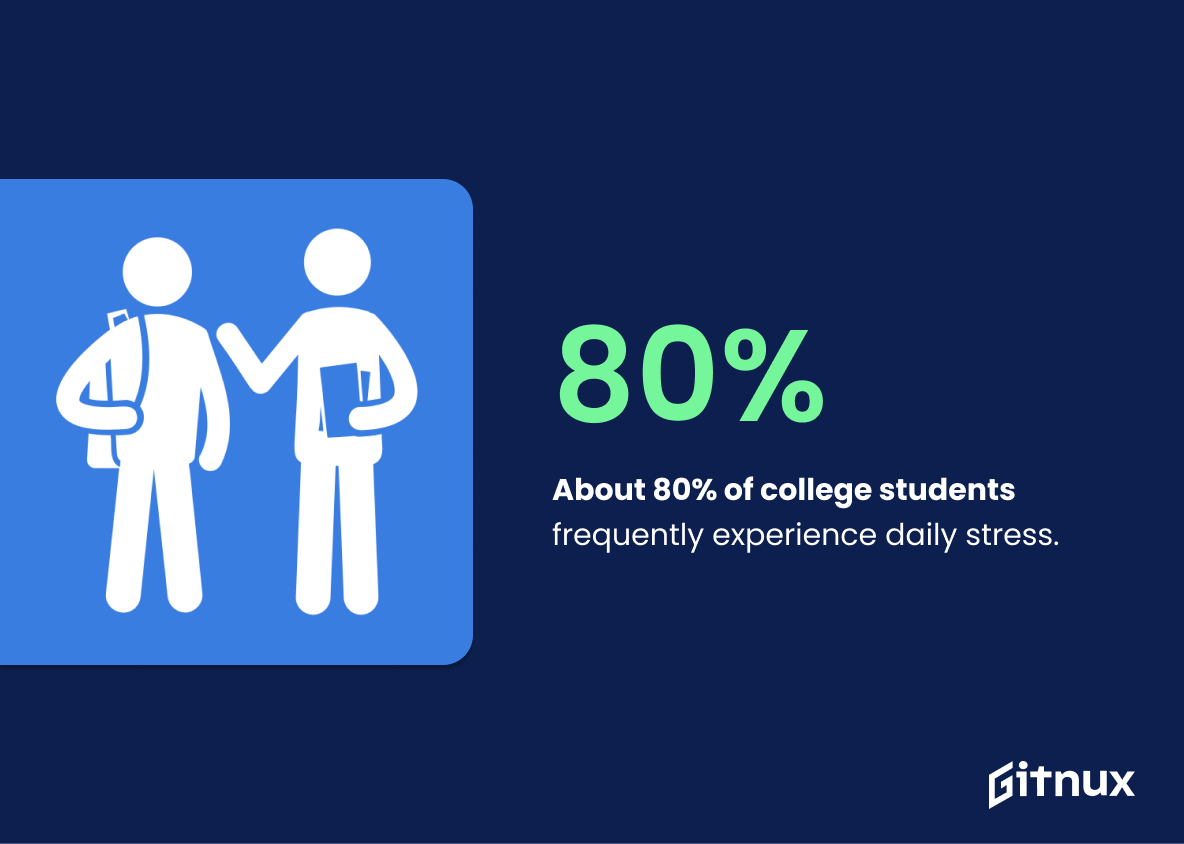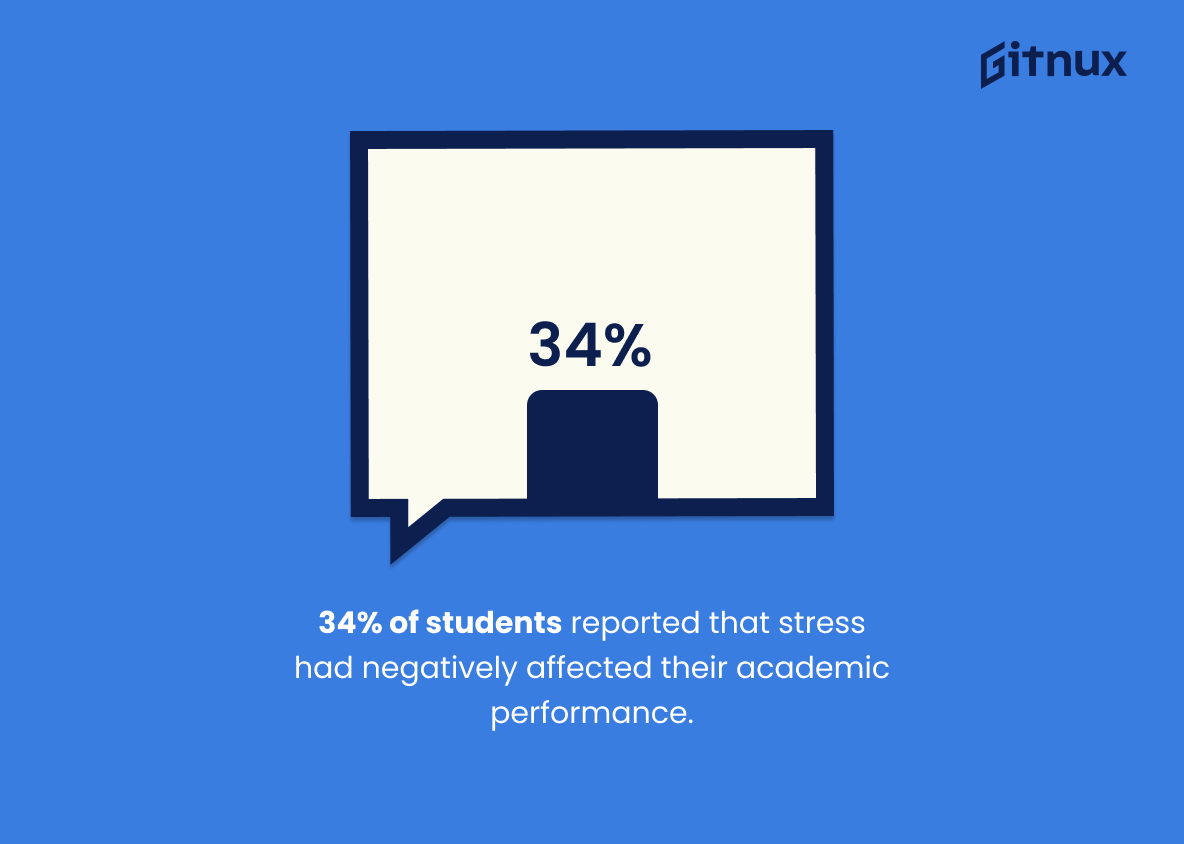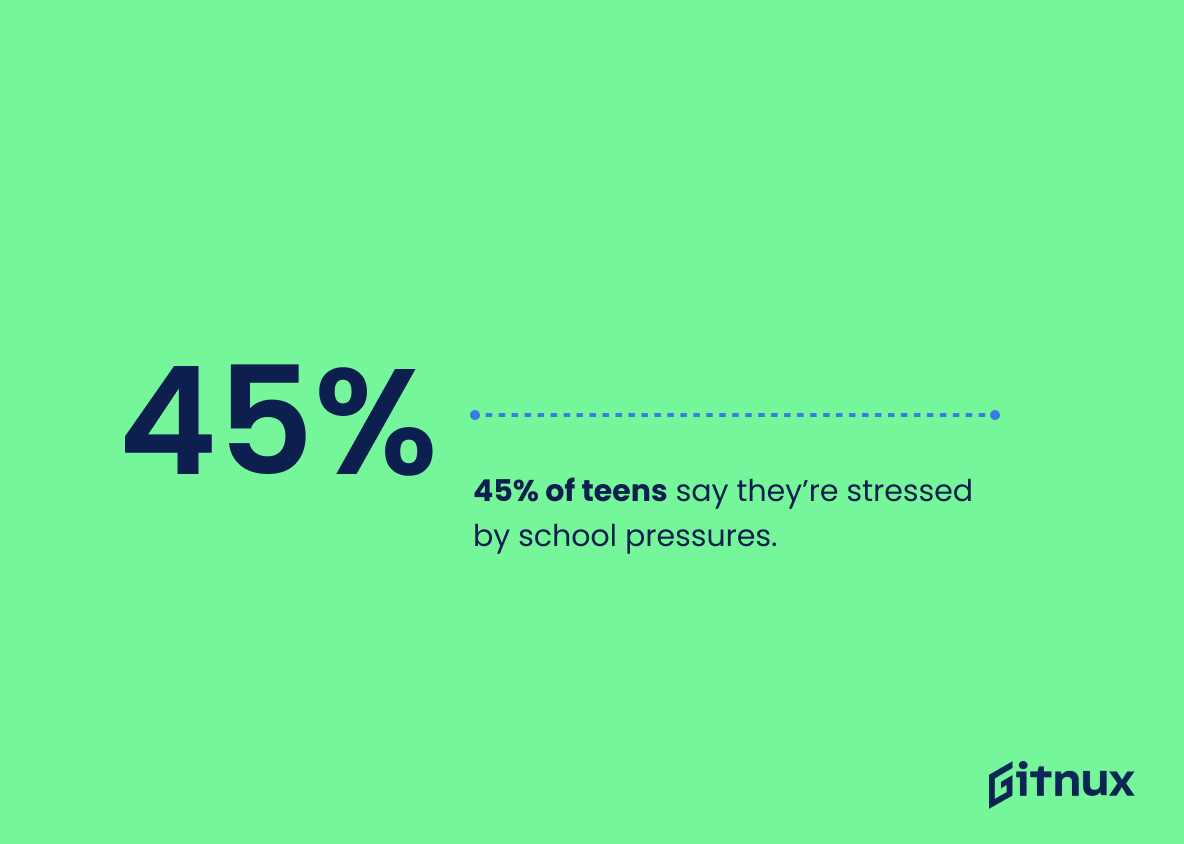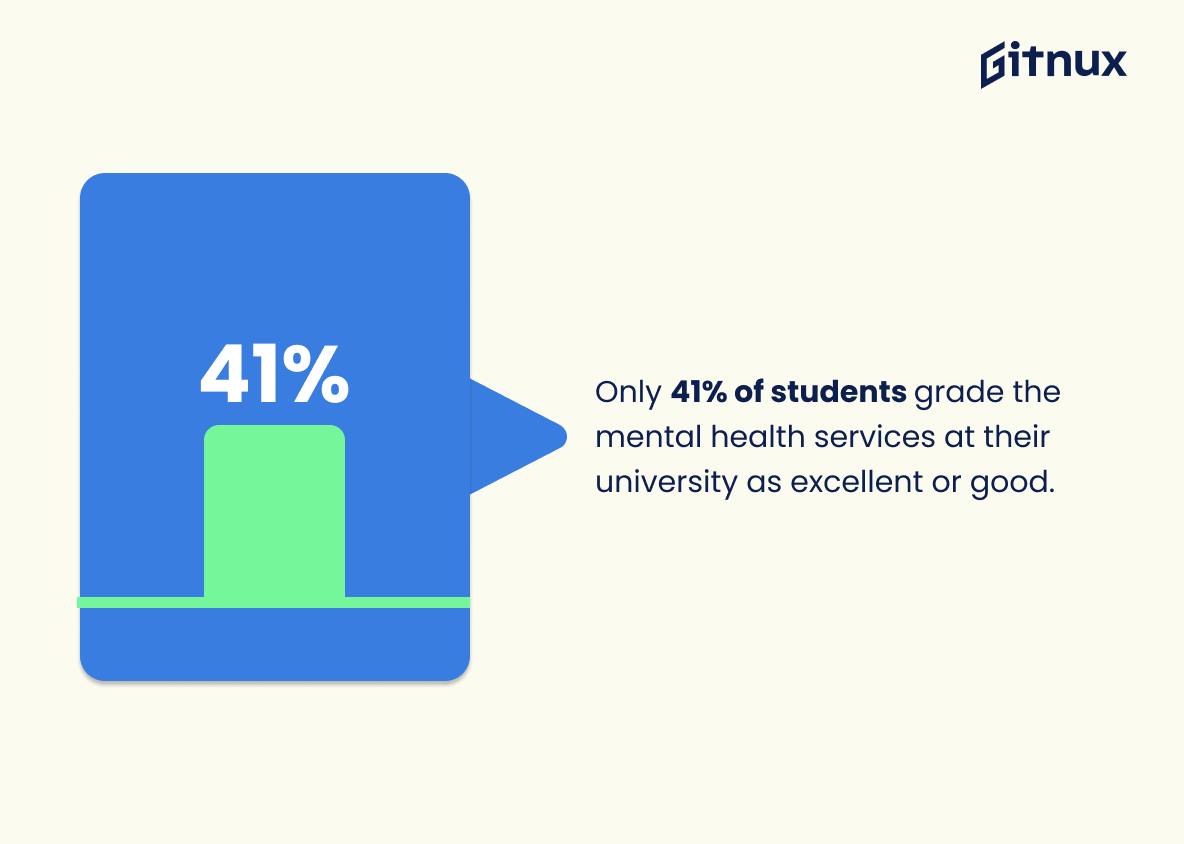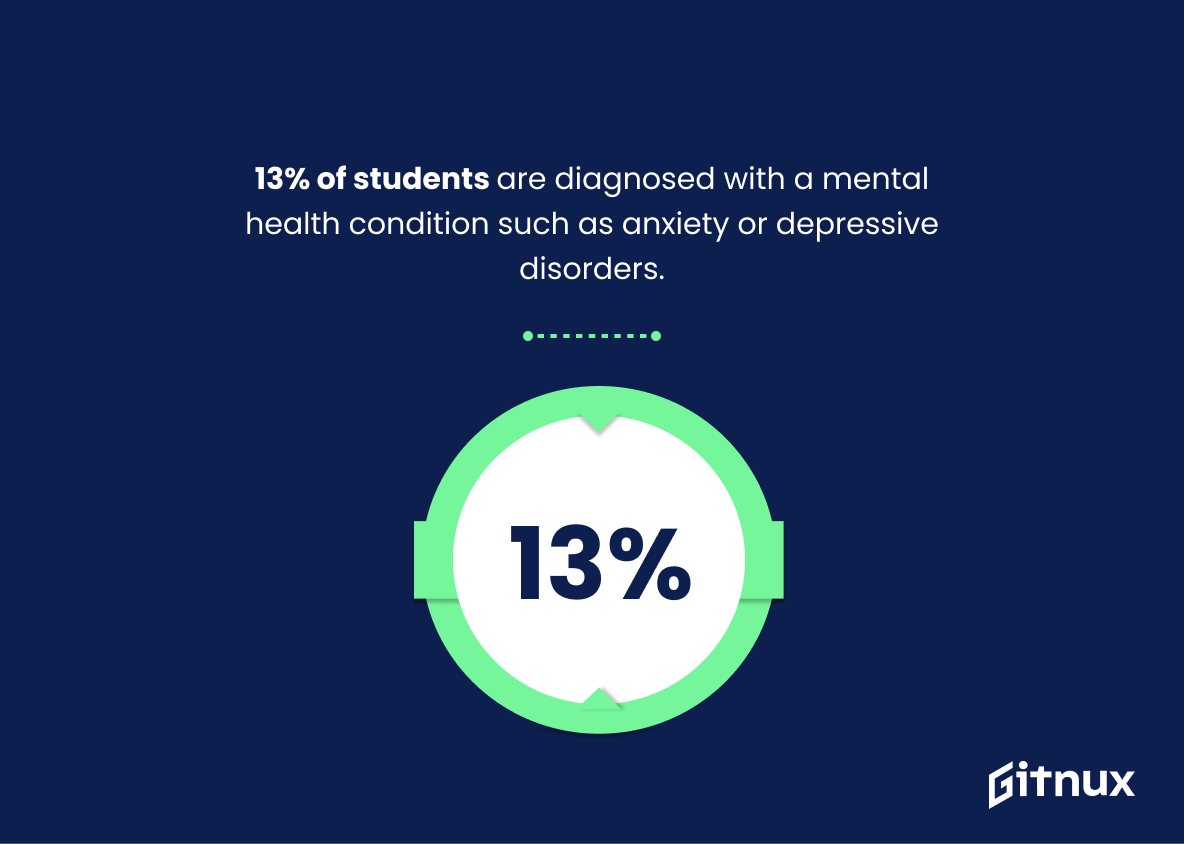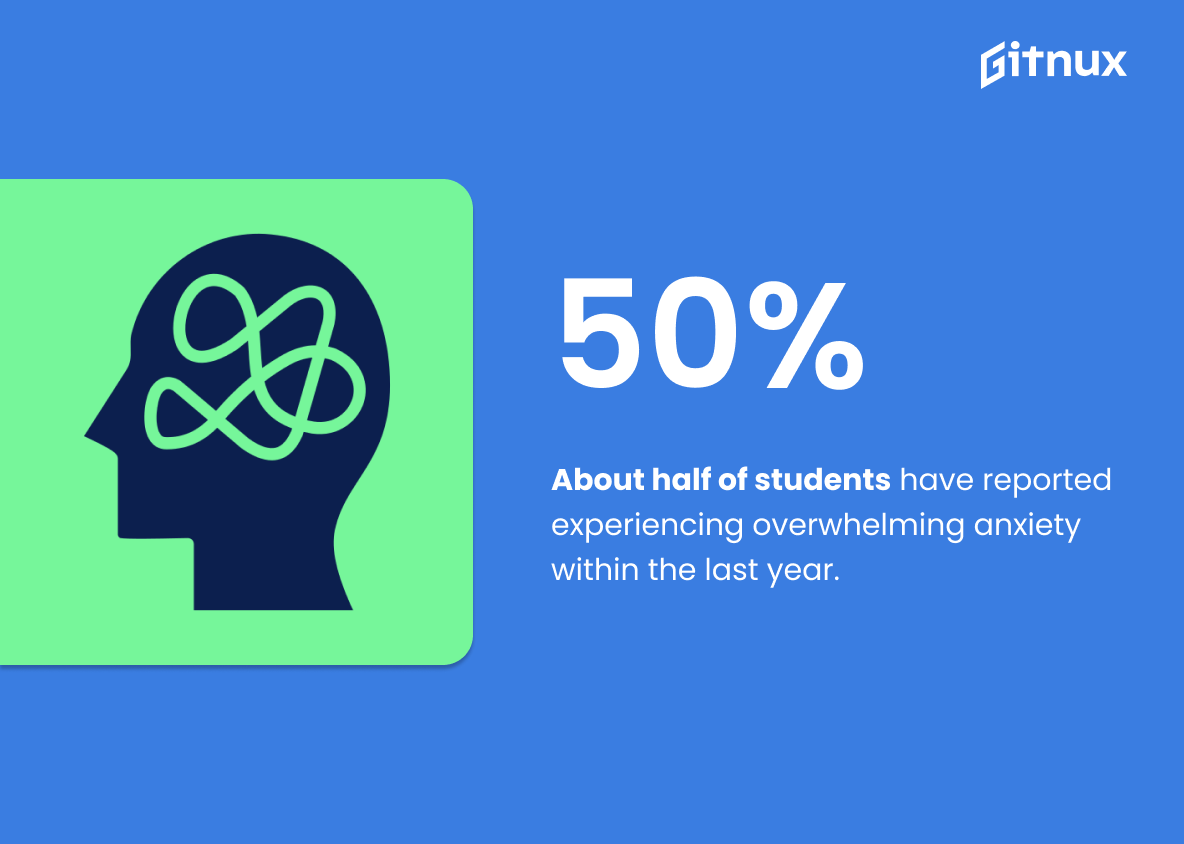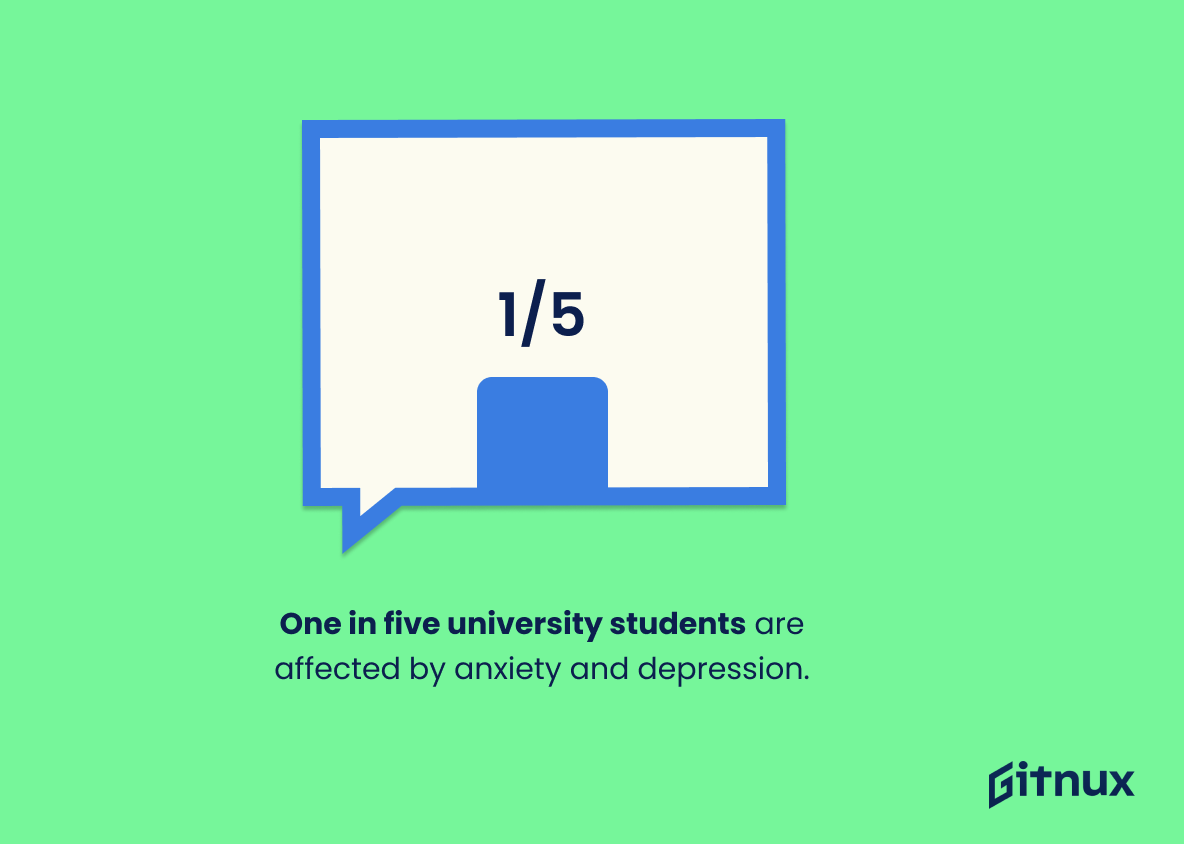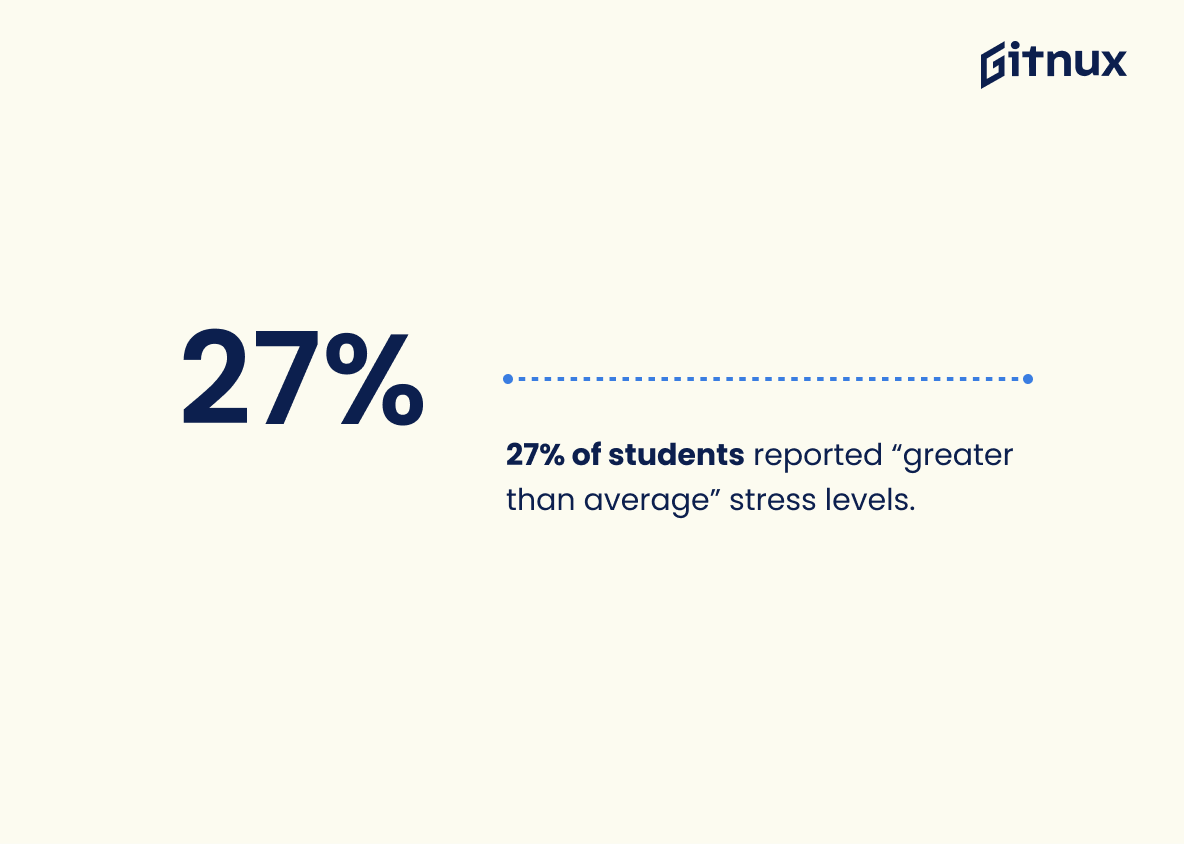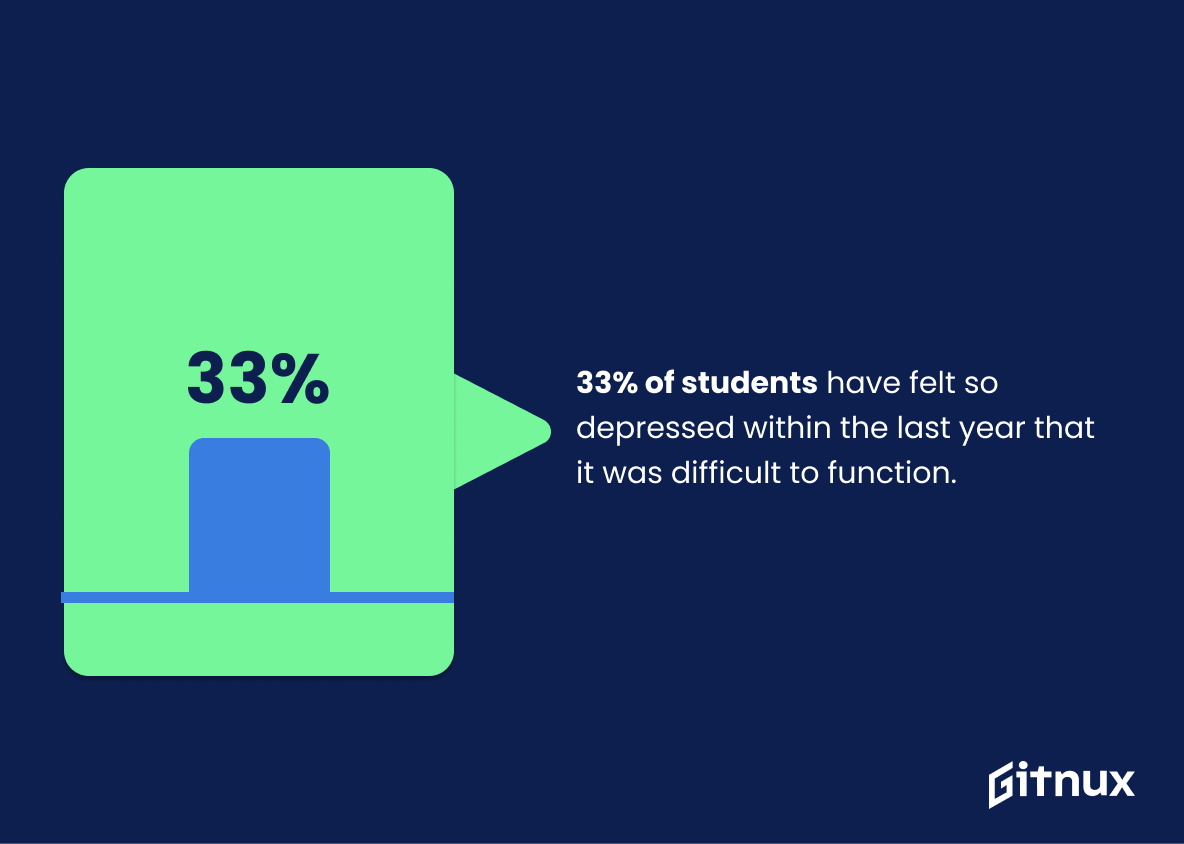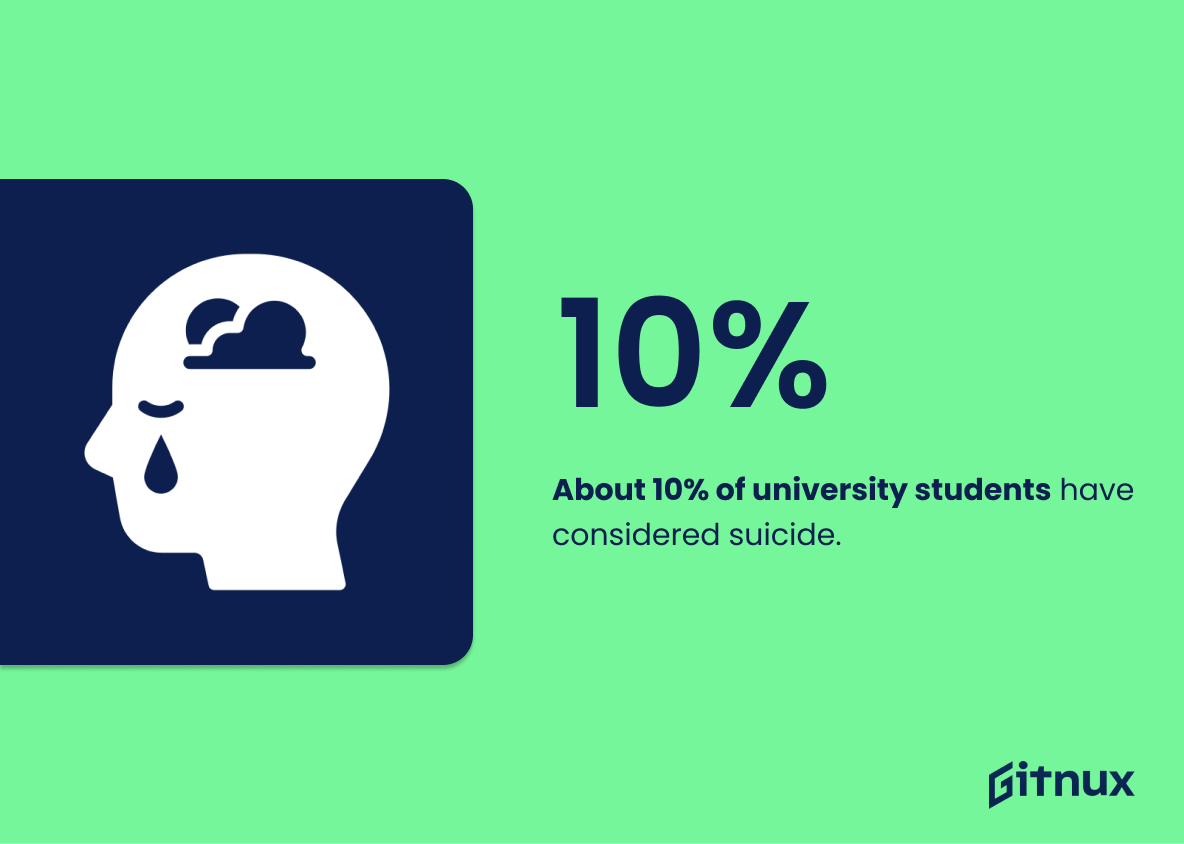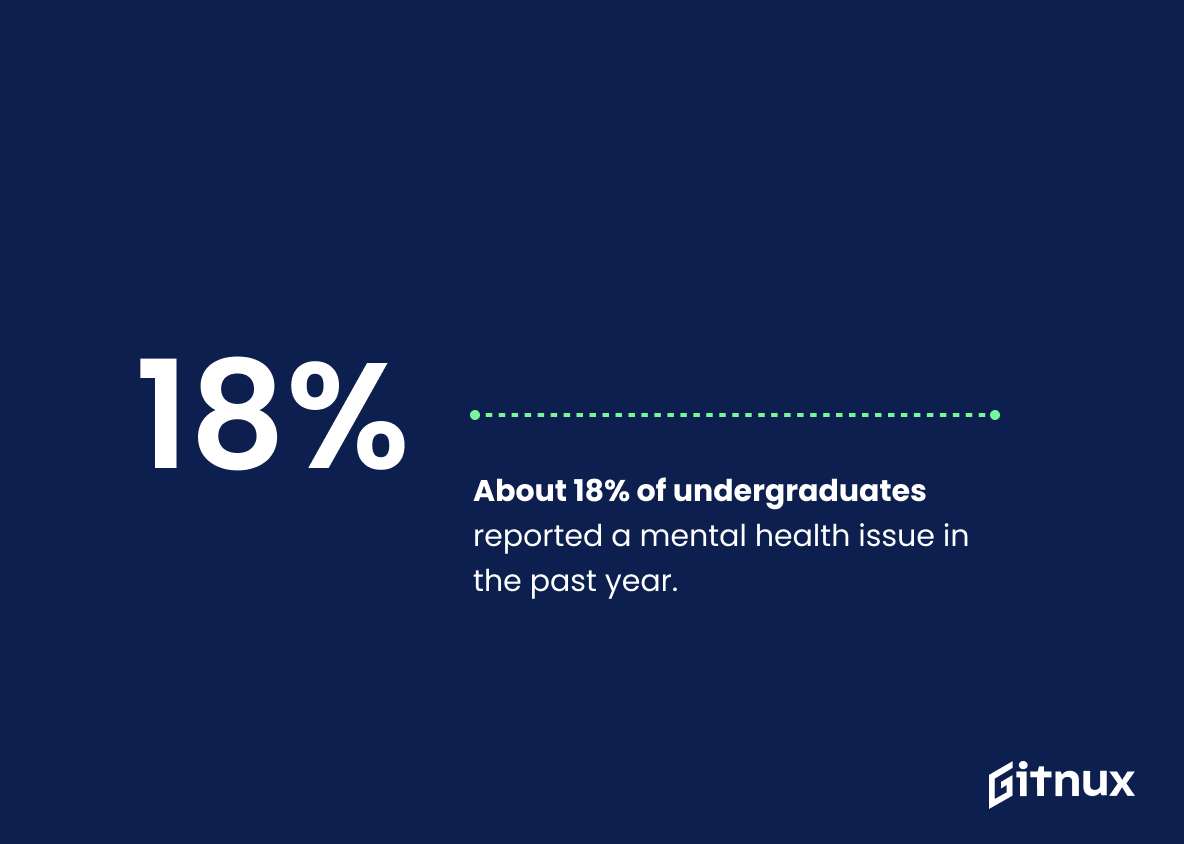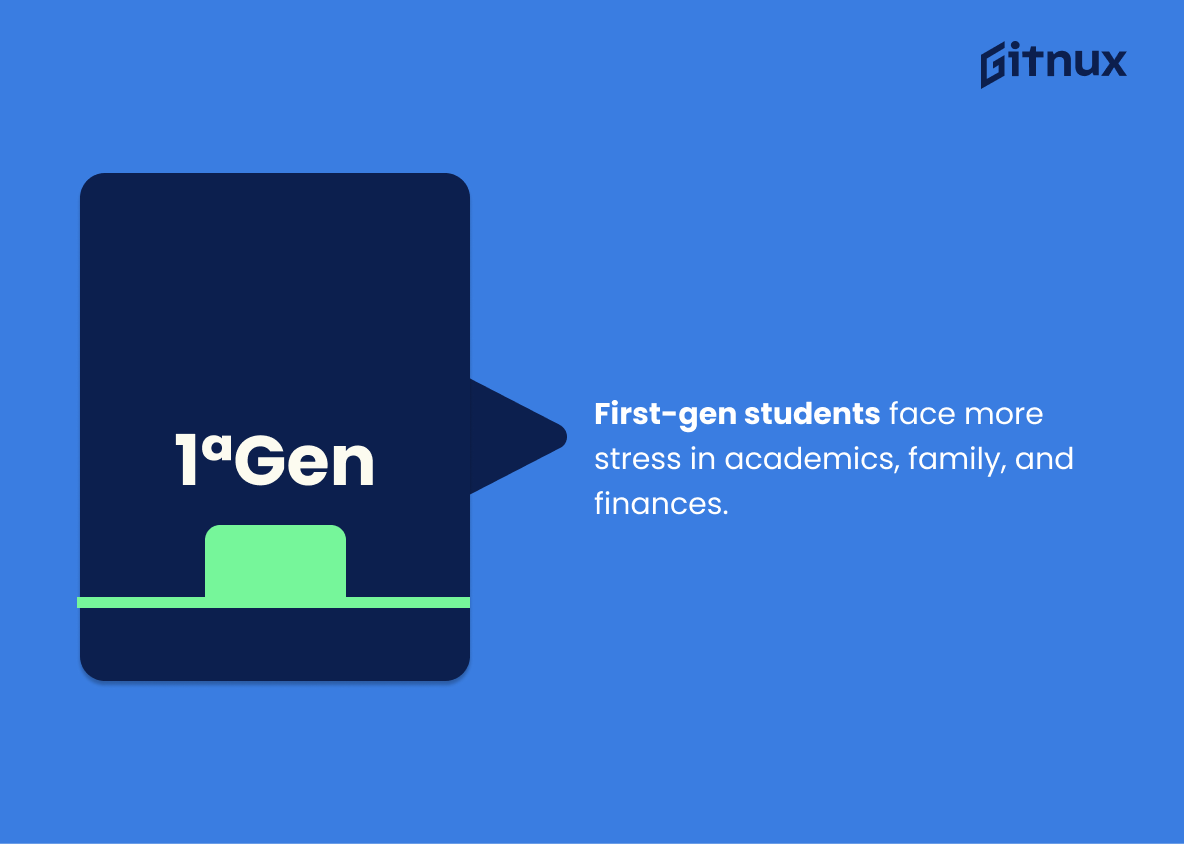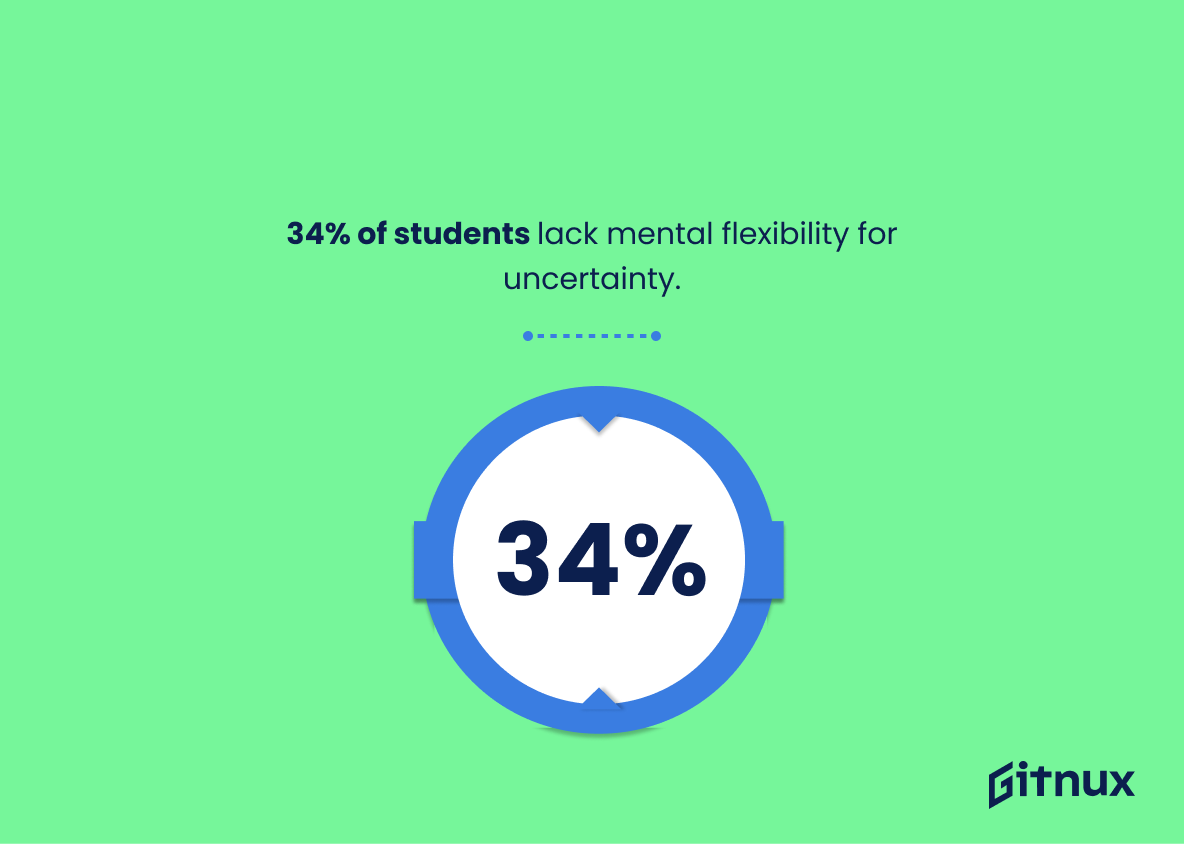Navigating the treacherous waters of academia can be a daunting endeavor. The never-ending pile of assignments, preparation for exams, financial pressure, and the struggle to balance social activities makes stress an inevitable part of the student life.
So pervasive is this issue that it has been extensively researched, giving birth to an overwhelming array of alarming student stress statistics. In this blog post, we will delve deep into these figures, revealing the true extent of the pressures that students face daily, and discuss how understanding these statistics could pave the way for more effective stress management strategies.
The Latest Student Stress Statistics Unveiled
About 80% of college students frequently experience daily stress.
Unveiling the significant reality that a striking majority of around 80% of college students regularly tread through the rough terrains of daily stress, dramatically underscores the urgency and relevance of addressing mental health in academic environments. This sizable proportion serves as a startling wake-up call in our blog post about Student Stress Statistics, amplifying the magnitude of the issue at hand. It clear-cutly highlights the importance of implementing effective interventions, preventive strategies, and support systems to help alleviate this rampant stress, thereby promoting overall students’ well-being and academic flourishing.
34% of students reported that stress had negatively affected their academic performance.
Reflecting on the statistic that a significant 34% of students admit to stress hampering their academic prowess, it serves as a combative challenge in the educational ecosystem. In a blog post dissecting Student Stress Statistics, this figure is pivotal as it uncovers the extent to which mental health impacts scholastic excellence. Highlighting the undeniable and profound relationship between pupils’ wellbeing and their academic output, it inspires stakeholders – educators, therapists, policy makers, and parents – to invest more in mental health support within academic settings. In essence, it can fuel changes in curriculum design, teaching methodologies, counseling services, and mental health awareness initiatives, thereby creating an atmosphere conducive to learning.
45% of teens say they’re stressed by school pressures.
To unravel the impact of scholastic demands on our students, appreciate the weight of this nugget of data: a whopping 45% of teenagers declare their stress is fueled by pressures from school. This revelation serves as a rallying cry in our discourse on Student Stress Statistics, underscoring the critical need for stakeholders – parents, educators, policymakers, to engage more actively in mitigating academic stressors. We must confront this tide of unease eroding our youth’s wellbeing, and this statistic puts a spotlight on the urgency of the matter.
Only 41% of students grade the mental health services at their university as excellent or good.
The statistic revealing that merely 41% of students grade their university’s mental health services as excellent or good is a stark reminder of the unfulfilled needs in the education sector when it comes to stress management. This perspective shed by the numbers adds gravity to our discussions about student stress statistics, driving home the point that universities worldwide might be falling short in addressing this significant issue. This could alarm readers to rally for better mental health support within educational institutions. Ultimately, this number serves as a forewarning to the broader community about the potential crisis lurking in the minds of our young scholars, demanding immediate attention and actions.
13% of students are diagnosed with a mental health condition such as anxiety or depressive disorders.
Shining a spotlight on the 13% of students grappling with diagnosed mental health conditions, such as anxiety or depressive disorders, serves as a wake-up call in the discourse around Student Stress Statistics. This figure not only draws a stark reality of the invisible battles many students are fighting, but it also amplifies the need for fostering healthy stress management strategies, accessible resources, and comprehensive support systems in educational environments. Standing on its own, this number may appear insignificant, but it’s the stories that make up this 13% that truly resonate – shadowing every statistic is a student, a stressor, and a struggle that cannot be ignored in any conversation about student stress. So, in the realm of academia, this statistic should not merely be a number, but an urgent call to action.
About half of students have reported experiencing overwhelming anxiety within the last year.
Unmasking the reality of student stress, this striking statistic unveils a prevalent concern – roughly 50% of students have endured debilitating anxiety within the past year. Renowned as the silent tormentor, anxiety doesn’t merely hover in the shadows but in many instances, it commandeers the student experience, leading us to question the mechanisms in place at academic institutions to help students cope. By bearing witness to the magnitude of anxiety amongst students, we reinforce the relevance of regular stress management interventions, mental health check-ins and call attention to the urgent need for empathetic understanding within our education system.
One in five university students are affected by anxiety and depression.
Peering into the tumultuous world of university life, an alarming revelation unfolds: 20% of students navigate their academic journey under the shadow of anxiety and depression. Such a reality does not merely represent numbers, but exposes the underlying mental health crisis simmering beneath the high-pressure academic environment. This statistic is essential in our discourse on student stress statistics, as it underscores the extent, gravity and immediacy of the issue. As students juggle lectures, exams, part-time jobs, and social commitments, the manifestation of stress is almost inevitable, and for one in five students, it escalates into anxiety and depression. As we unravel this issue, we take a step closer to understanding the silent battle waged by those around us and catalyze the development of necessary remedial measures, awareness campaigns and comprehensive mental health services.
27% of students reported “greater than average” stress levels.
Woven into the fabric of our narrative on Student Stress Statistics, the revelation that 27% of students report ‘greater than average’ stress levels is akin to uncovering an iceberg below the serene surface of education. This figure sends ripples through our understanding, challenging perceptions of an easy-going study life. It paints a crystal-clear picture that a substantial fraction of the youth is grappling with mounting pressure, underscoring the gravity of the situation. Merely one thread in the tapestry of our discourse, but an essential one, demonstrating that stress in students is not just a fleeting concern, but a prevailing reality. The universality of such figures prompts necessary discussion, constructive dialogue, and most importantly, proactive action toward stress management solutions.
33% of students have felt so depressed within the last year that it was difficult to function.
In the bustling universe of academia comes the surprising revelation- a significant chunk, 33%, of the student populace experiences such severe bouts of depression within a year that it interferes with their daily functioning. This might be regarded as a stark warning bell in the grand narrative of students’ stress statistics.
An alarmingly high percentage, it unveils a grave truth hidden behind the perceived dynamic and vibrant student life. This solitary piece of data nudges us to acknowledge and address the rampant, perhaps underestimated, psychological distress that students undergo.
More importantly, it underscores the reality that mere academic rigors have transcended into profound psychological burdens, potent enough to debilitate one-third of our student community. This intense revelation, therefore, acts as a compelling call to action, advocating for enhanced stress and mental health management strategies within our academic circuits.
7 out of 10 college students feel stressed about their personal finances.
Unraveling the tightly knitted world of student stress, the illuminated fact that 7 out of 10 college students grapple with worries about personal finances underscores the omnipresence of economic anxiety among today’s scholars. This figure, a revealing compass, directs us towards the strong correlation between academic pursuits and financial pressures. Thus, in the grand mural of Student Stress Statistics, it occupies a commanding perception-altering space, showing us that universities are not just cognitive battlegrounds but also places where economic realities clutch hard at the minds of students. Contentiously, it leads the charge to acknowledge and address the substantial monetary challenges students face, amidst their quest for knowledge, substantiating the broader discussion of stress factors engulfing today’s learning environment.
About 10% of university students have considered suicide.
Building a powerful case around Student Stress Statistics, the stark revelation that approximately 10% of university students have contemplated suicide takes the spotlight. This unnerving data paints a worrisome narrative of the alarming levels of stress and psychological strain shouldered by the young minds in their path to academia. In the mosaic of insights being unveiled in the blog post, this statistic is a wake-up call, pointing to the urgency of proactive mental health support in universities. A figure that is more than a mere percentage, it underscores the crucial need for campus-wide conversations surrounding mental health, making our blog post not just insightful, but importantly, a call to action.
Students who are marginalized because of their gender, sexuality or race also report higher levels of stress.
Diving deep into the heart of student stress statistics, we find a compelling revelation – marginalized students, owing to their gender, sexuality or race, report greater stress levels. This nugget of data shines a spotlight on the additional challenges faced by an under-recognized student cohort. It demands attention, underlining the urgency to incorporate inclusivity and equality within our educational systems. Moreover, it holds a mirror up to society’s biases, pressing the need rethink how we conceive of ‘stressors.’ Lastly, it opens up avenues for more specialized interventions. Remedial action must now cast a wider net, considering these unique stress factors. Clearly, our journey towards understanding student stress is incomplete without acknowledging and examining this significant statistic.
It was estimated that approximately 18% of undergraduate students reported having a mental health problem in the previous year.
Drawing our focus onto an unsettling revelation, a staggering 18% of undergraduate students confessed to grappling with mental health concerns in the recent year. In a landscape where student stress is escalating at an alarming pace, this statistic stands as a potent reminder of our educational community’s silent struggle. It underscores the pressing need for comprehensive support and intervention strategies tailored towards this vulnerable group. Moreover, it encourages a deeper discussion about the prevalent stressors undergraduates face – be it the pressures of academic success, financial burdens, or challenging transition to adulthood – and the toll it takes on their mental wellbeing. Understanding this statistic isn’t just looking at a number; it’s about acknowledging our students’ fight against unseen adversities, and sparking a consciousness around mental health in our educational spaces.
Although all students deal with stress, first-generation college students reported higher levels of stress related to academic challenges, family problems, and finances.
Highlighting the above statistic sheds light on the amplified stress experienced by first-generation college students, a vital facet in the broader narrative of Student Stress Statistics. It seeks attention to the unique struggles linked to academic obstacles, family issues, and financial pressures that this group often grapples with. Discussing this in a blog post runs deeper than just numbers; it provides insight into the human reality behind the data, uncovering aspects of educational stress often overlooked, and underlining the necessity for tailored support systems for first-generation students. Moreover, it presents an urgent call to educators, policy makers, and society to acknowledge and address these additional stress layers, thereby providing a more inclusive and supportive academic environment.
34% of students report that they do not know how to live with uncertainty—suggesting they don’t have the mental flexibility and resilience to deal with life as it is.
Navigating the seas of uncertainty encapsulates an integral part of the student journey, as life continuously throws curveballs and changes direction. When we look at the striking figure, where 34% of students admit their struggle to live with uncertainty, we are staring at a worrisome iceberg lurking beneath the surface of Student Stress Statistics. This stark statistic represents a worrying lack of mental agility and resilience among students, crucial skills needed not just for academic success but also for thriving in the wider world beyond the campus. It illuminates an urgent need for providing more support, teaching coping mechanisms, and building resilience among students to heal the shivering spines of stress statistics.
In a 2014 survey, 40% of post-secondary students reported feeling so depressed that it was a struggle to function.
Highlighting the statistic that ‘in a 2014 survey, 40% of post-secondary students reported feeling so depressed that it was a struggle to function,’ brings to the forefront the unignorable reality of emotional and mental fatigue within the scholarly community. This piece of data acts as a stark reminder that stress extends beyond purely academic pressure, and can tilt into the realm of serious mental health conditions like depression. By planting this statistic in a blog post regarding Student Stress Statistics, it underscores the acute necessity for supportive infrastructures that can address and alleviate these potent stressors. Moreover, it can open dialogues for initiating holistic solutions and encouraging conversations around a more mindful, empathetic approach to education and student life.
30% of all students report feeling stressed out during the school year.
Peering through the statistical lens, the revelation that 30% of all students confess to wrestling with stress during the school year unveils an alarming reality. Serving as an important signpost, it sparks a necessary conversation about the emotional health of our learners which is often left unattended in the panoramic picture of education. This facet of student stress is a nuanced, yet significant motivator for the prioritisation of well-being strategies, possibly catalysing an educational paradigm shift. In the context of a blog post about Student Stress Statistics, it offers an insightful perspective, amplifying the urgency to address and rectify stress factors in the academic setting, ultimately providing a better and balanced educational experience for students.
The majority of ongoing mental health conditions begin by age 24, thus impacting many college students.
Diving into the world of academia, we are often preoccupied with grappling with encyclopedic textbooks, memorizing theories and theorems, and battling for grades. Frequently, the underlying narrative of mental health is overlooked, especially its profound influence on the young minds dotting the realm of higher education. Highlighting the statistic that the majority of ongoing mental health conditions sprout by age 24, it cast a spotlight onto an unrecognized battlefield that a substantial number of college students are thrown into. This glaring fact paints a vivid reality of the substantial intersection between academic pressures and mental health challenges among students. It acts as a silent reminder, contributing to the broader conversation of student stress management, urging educators, parents, and peers to not only focus on visible academic accomplishments but also the invisible battlefields of mental health.
Conclusion
Understanding student stress statistics is more than just about numbers and data. It’s a mirror into the realities of student life, reflecting their academic pressures and emotional struggles. With a growing trend observed in the levels of stress experienced by students, it is crucial to focus on strategies for stress management and wellness programs in educational institutions. This will not only promote student success but also foster mental health so that the students of today can become the healthy, balanced leaders of tomorrow. By acknowledging and addressing this issue, we can contribute towards creating a healthier, happier, and less stressful academic environment.
References
0. – https://www.www.rcpsych.ac.uk
1. – https://www.www.nami.org
2. – https://www.www.acha.org
3. – https://www.www.clarionledger.com
4. – https://www.www.cpr.org
5. – https://www.www.bgsu.edu
6. – https://www.www.apa.org
7. – https://www.www.timeshighereducation.com
8. – https://www.www.ncbi.nlm.nih.gov
9. – https://www.www.insidehighered.com
10. – https://www.www.nature.com
11. – https://www.health.usnews.com
12. – https://www.hechingerreport.org
13. – https://www.www.emerald.com

